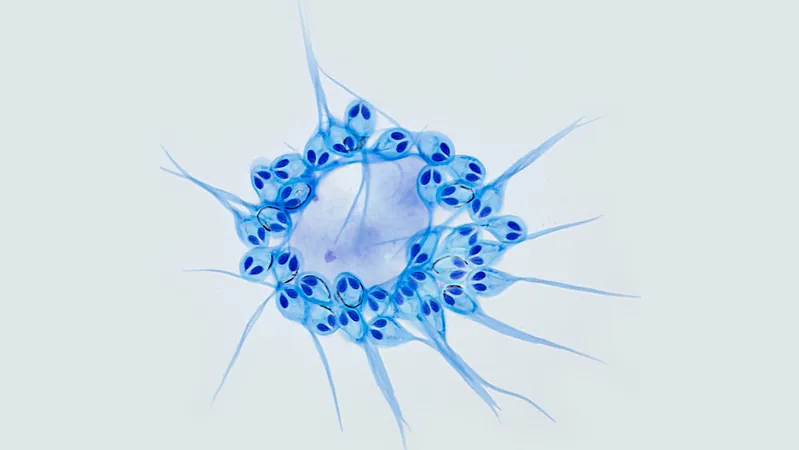
Shocking Discovery: Meet the Non-Oxygen Breathing Parasite Henneguya salminicola!
2025-01-12
Author: Jacob
Groundbreaking Discovery
In a groundbreaking discovery that is shaking up our understanding of animal biology, researchers have unveiled Henneguya salminicola, a parasite that has completely shed its mitochondrial genome and, astonishingly, does not require oxygen to survive. This finding challenges long-held beliefs about aerobic respiration being a fundamental trait among eukaryotes.
Mitochondrial Adaptations
Mitochondria, the powerhouse of eukaryotic cells, are known for their critical role in oxygen-based respiration. However, adaptations to anaerobic lifestyles have led some organisms, particularly within unicellular lineages, to discard this capability. The study of H. salminicola, a member of the Myxozoa group closely related to jellyfish, reveals that this peculiar parasite has taken this adaptation to an extreme, losing not just its mitochondrial genome but also nearly all of the nuclear genes associated with mitochondrial functions.
Research Techniques and Findings
Cutting-edge deep sequencing techniques and microscopic observations revealed that while H. salminicola retains mitochondrion-related organelles, it lacks crucial components necessary for aerobic respiration. Instead, the analysis detects only remnants of these genes in the form of pseudogenes, indicating a complete evolutionary shift away from oxygen dependence. This stood in stark contrast to a close relative, Myxobolus squamalis, which possesses a fully functional mitochondrial genome.
Implications of the Discovery
The implications of this discovery extend far beyond just the myxozoan lineage. It suggests that the ability to thrive in an oxygen-free environment is not limited to single-celled organisms, but has also evolved in multicellular animals. This evolutionary leap raises fascinating questions about how life can adapt to extreme conditions and how such adaptations can influence the phylogenetic tree of life.
Microscopic Evidence
Microscopic evidence supports these findings, with fluorescence microscopy distinguishing the stark difference between the mitochondrial structures in H. salminicola and its relatives. This research opens up new avenues in understanding metabolic pathways in parasitic organisms and illustrates the vast diversity of life forms that inhabit our planet.
Conclusion
Thus, Henneguya salminicola not only offers a unique perspective on evolutionary biology but also serves as a compelling example of nature's potential to adapt in astonishing ways. As scientists continue to explore these fascinating adaptations, we may even uncover more surprises lurking in the depths of our health and environment!
Engagement with Readers
Are you amazed by this extraordinary organism? What could this mean for our understanding of life on Earth and beyond? Stay tuned as more discoveries unfold!



 Brasil (PT)
Brasil (PT)
 Canada (EN)
Canada (EN)
 Chile (ES)
Chile (ES)
 Česko (CS)
Česko (CS)
 대한민국 (KO)
대한민국 (KO)
 España (ES)
España (ES)
 France (FR)
France (FR)
 Hong Kong (EN)
Hong Kong (EN)
 Italia (IT)
Italia (IT)
 日本 (JA)
日本 (JA)
 Magyarország (HU)
Magyarország (HU)
 Norge (NO)
Norge (NO)
 Polska (PL)
Polska (PL)
 Schweiz (DE)
Schweiz (DE)
 Singapore (EN)
Singapore (EN)
 Sverige (SV)
Sverige (SV)
 Suomi (FI)
Suomi (FI)
 Türkiye (TR)
Türkiye (TR)
 الإمارات العربية المتحدة (AR)
الإمارات العربية المتحدة (AR)